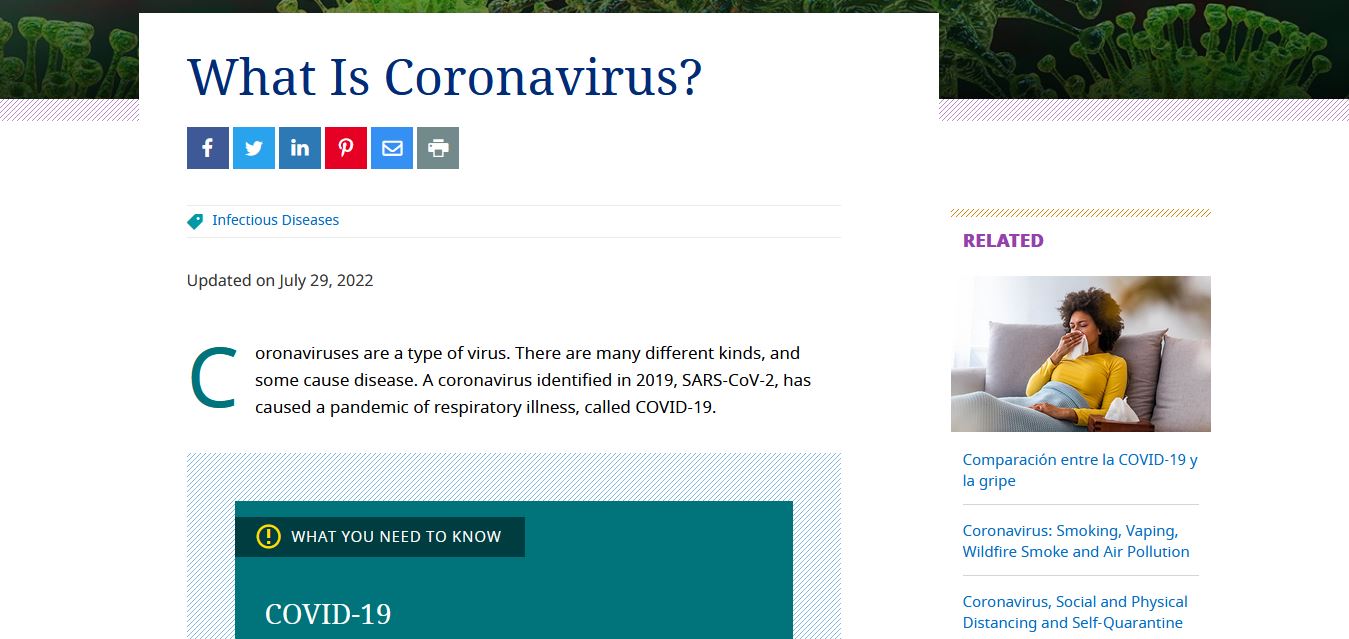
Covid-19
The first case of COVID-19 was reported Dec. 1st, 2019, and the cause was a then-new coronavirus later named SARS-CoV-2. SARS-CoV-2 may have originated in an animal and changed (mutated) so it could cause illness in humans. In the past, several infectious disease outbreaks have been traced to viruses originating in birds, pigs, bats and other animals that mutated to become dangerous to humans. As of now, researchers know that the coronavirus is spread through droplets and virus particles released into the air when an infected person breathes, talks, laughs, sings, coughs or sneezes. Larger droplets may fall to the ground in a few seconds, but tiny infectious particles can linger in the air and accumulate in indoor places, especially where many people are gathered and there is poor ventilation. This is why mask-wearing, hand hygiene and physical distancing are essential to preventing COVID-19. Research continues, and more study may reveal how and why the coronavirus evolved to cause pandemic disease (John Hopkins Medicine, 2022).
Reference:





